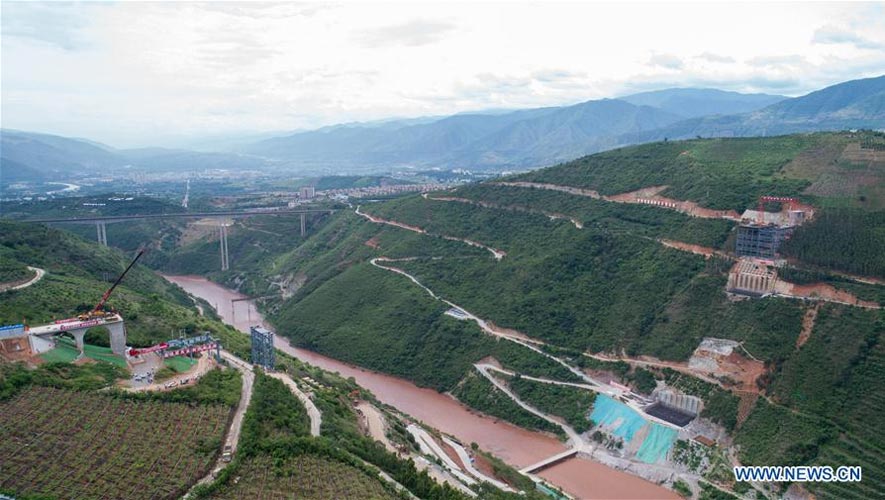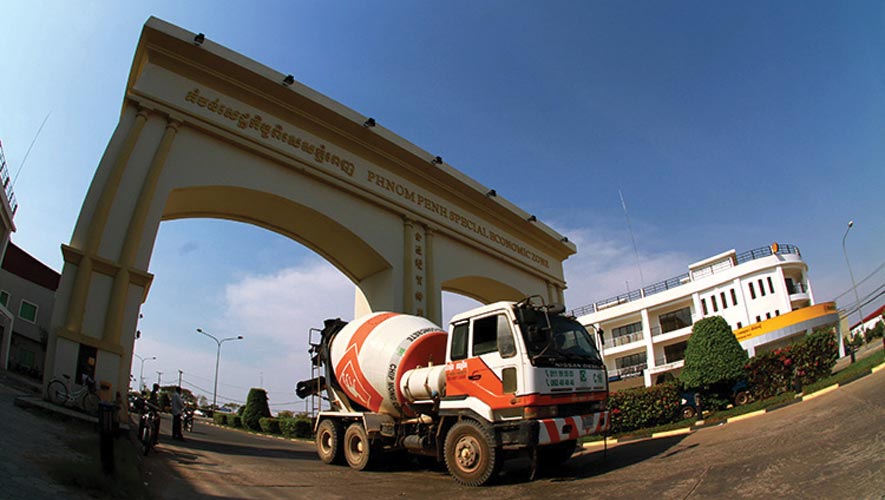When Taiwan-based global curtain manufacturer Nien Made Enterprise Co Ltd announced plans on Aug. 13 to expand operations in Cambodia to avoid the fallout from the US-China trade war, some saw the move as a short-term benefit of the US-China trade war.
For the latest Cambodian Business news, visit Khmer Times Business
A theory shared by many has been that the slowing of China’s economy will reap rewards for Cambodia as manufacturers in China move operations to smaller, cheaper countries outside the US tariff zone.
Nien Made’s decision seemed to back that hypothesis. The company said it was expanding its production line in Southeast Asia and shifting orders for finished products from China to Cambodia to avoid the risk of US tariffs. About one-third of the company’s ready-made products, such as blinds, are made in China, but it now plans to gradually shift the bulk of its operations in that area to Cambodia over the next few years.
“The production capacity in China has reached the full-load condition. China’s [then] one-child policy caused the labour shortage and resulted in wages rising repeatedly, which became a challenge for Nien Made’s medium and long-term development,” the company posted on its website. “Faced with the manpower structure problem in China, Nien Made adopted a trans-national production strategy to reduce the impact and expand capacity.”
Nien Made started a pilot factory in December 2013 and has so far created about 4,000 jobs in Cambodia, the company says in an email.
Although just one example, Nien Made’s expansion decision was welcome news in Cambodia, which has been hoping the country would be a beneficiary of the trade war. Instead, manufacturers have been slow to arrive, even as the cost of doing business in China increases.
Meanwhile, the regions’ economies are expected to continue to shrink as the global economy cools.
In the first half of this year, the Council for the Development of Cambodia approved 153 investment projects worth around $5.2 billion, an increase of 48 from the same period last year. According to the Garment Manufacturer’s Association of Cambodia, 34 new factories opened in the first half of this year, of which 32 produce travel goods and two make footwear.
“The number of investors has been growing for years and we expect that to continue,” GMAC Secretary General Ken Loo says. But asked whether the trade war was sparking a more rapid influx of investment, he was blunt: “Oh no, not at all.”
Moves by Nien Made and others have so far been few and far between. Although many manufacturers are ditching China, not that many are coming to Cambodia. If the long-term global economic impact of the trade war is a gloomy one, as predicted, it seems that Cambodia might go straight into the long-term bad before ever enjoying the short-term good.
“If there is a global economic crisis resulting from the trade war, it will reduce investment from China to Cambodia and vice versa,” Lim Menghour, deputy director of Mekong Strategic Studies of the Asian Vision Institute, says. “Cambodia’s trading activities and economic growth will be hugely affected.”
Vietnam competition
“Cambodia is in a very interesting spot,” says Deborah Elms, founder and executive director of the Asian Trade Centre. She says the predicted loss of the European Union’s Everything But Arms (EBA) treaty and competition from Vietnam in the garment sector will hurt the country even more. And Cambodia shouldn’t expect much in the way of new investment.
“The idea that Cambodia will capture supply chains moving out of China is a challenge,” Elms says. “Until and unless the overall business environment is dramatically improved, it is hard for firms to see Cambodia as a viable platform. It can, potentially, compete in some limited areas on price. But labour is a challenge and nearly everything else about doing business is difficult. The country has made significant strides forward, but more needs to be done.”
Elms says the government needs to seize the opportunities caused by multiple crises to push ahead with some economic reform initiatives. This includes not just hard infrastructure investments, but soft skills upgrading and sensible reforms that need not be expensive or even too difficult to implement.
“At a time of economic slowdown and uncertainty, firms will tolerate less any obstacles to doing business. Companies are already absorbing costs in shifting production, re-imagining new ways of operating, reconsidering operations and so forth. They cannot afford additional challenges,” Elms says. “Until and unless many of these challenges in starting and operating a company are addressed, Cambodia will continue to struggle to attract and maintain investment,” she says.
Tommy Wu, a senior economist at Oxford Economics in Hong Kong, says Cambodia is not yet ready to take on manufacturers from China. “We do think that rising production costs in China have led companies to consider relocating supply chains to other Asian economies. And the uncertainties generated by the US-China trade tensions have accelerated companies’ relocation plans. However, Cambodia lacks the infrastructure, production capacity and labour productivity to capitalise on the trend. It’s probably still not too late, given that supply chains relocation will be an on-going process for years to come,” Wu says.
Global economic crisis
The trade war is certainly not expected to end soon and that has been roiling global markets. As recently as Aug. 1, US President Donald Trump announced that a new barrage of tariffs – 10 percent on $300 billion of consumer goods – would hit China on Sept. 1. Trump partially walked back on that threat on Aug. 13, saying he would delay tariffs on many consumer technology products, toys and other items until Dec. 15. New tariffs on $52 billion in goods are still scheduled for Sept. 1. The Dow Jones Industrial Average rallied on news of the delay. The next day – Aug. 14 – ominous data from the German and Chinese manufacturing sectors and an inverted yield on 10-year US Treasury bonds sent Wall Street stocks crashing 800 points in the worst decline of the year.
In Asia, tariffs and other factors such as debt have drastically affected China. As of Aug. 13, China’s industrial production growth came in at 4.8 percent year-on-year – down from 6.3 percent in June and the lowest since February, according to The Trivium Tip Sheet.
Accounting for seasonal distortions, it’s the lowest it has been in decades, Trivium reported. Retail sales growth came in at 7.6 percent – down from 9.8 percent in June and the lowest since April. Fixed asset investment growth was 5.1 percent – down from 6.3 percent in June and the second slowest growth rate in 2019, after May’s 4.7 percent. As of Aug. 15, China’s currency was trading at 7.02 yuan to $1, above the benchmark number that is used by China as an indicator of economic strength.
Recession predicted
Maybank Kim Eng, a financial services company, reported it is predicting a technical recession in the third quarter of the year given the escalating US-China trade war.
Many economists agree with that assessment.
“With trade tensions between the US and China unlikely to abate anytime soon, we expect exports and trade-related services to push the economy into technical recession in the third quarter of 2019,” Sian Fenner at Oxford Economics wrote in a research note.
Singapore is already predicted to be slipping into recession after it reported a big drop in economic activity in the second quarter of the year. On Aug. 13, the wealthy island city-state announced growth would be between zero percent and one percent in 2019. Previously, it predicted the economy would grow by between 1.5 percent and 2.5 percent.
The downgrade followed very weak figures for the April-June period when GDP shrank by 3.3 percent compared with the first quarter of the year. The outlook has weakened in part because of how much trade tensions between the US and China have escalated, Singapore’s Minister of Trade and Industry Chan Chun Sing said.
This will hurt Cambodia given that Singapore is the second largest investor in Cambodia. “If Singapore’s economy is slowing down, it is not just Cambodia that will be affected but the region as a whole could be well affected by this trend,” AVI’s Menghour says.
Like Cambodia, Singapore is heavily reliant on exports and China is its largest trading partner. Cambodia and other smaller states in the Asia-Pacific region have to be cautious about the instability arising from the trade war, economists say.
“Although this US-China clash could provide immediate trade and economic opportunities, Cambodia must prepare itself to avoid a crisis in the uncertain future,” according to Menghour.
He adds: “When elephants fight, it is the grass that suffers.”




